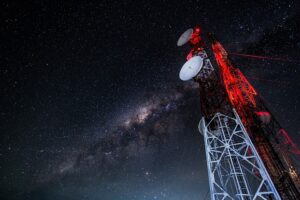The Power of Broadcast Radio is Huge!

The golden days of radio are ahead of us, not behind. Millions more people listen to radio today than in the 30’s, 40’s and 50’s! You need to advertise on the radio! It’s simple and it’s easy to change your advertising direction if needed and it pays you big money!
With the prevalence of FM radio as the primary medium for recent generations, many people are unaware of the diversity of radio broadcasting methods available, such as AM, FM, Pirate Radio, Terrestrial Digital Radio, and Satellite. Here is a brief overview of each type:
AM, or amplitude modulation, was the earliest form of radio broadcasting. It gets its name from its method of emitting radio waves by manipulating the amplitude of the signal. The medium-wave band is used worldwide for AM broadcasting, while other parts of the world use the long-wave band. One of the advantages of AM radio is its simplicity, and its signal is easily detected.
FM, or frequency modulation, was invented in the 1930s as a solution to the interference issues faced by AM radio. FM radio stations use VHF waves and offer better sound fidelity, allowing for stereo broadcasting to thrive. FM ranges are shorter than AM ranges, which makes them better suited for local radio stations. Originally, FM radio did not pose a threat to AM radio because it required a different type of receiver, but after World War II, a change in frequencies made FM radio more accessible and popular.
Pirate Radio refers to illegal or unregulated radio transmission, which is often used for political purposes, entertainment, or two-way communication. Although pirate radio’s origins can be traced back to general unlicensed use, there have been instances where ships at sea have used this mode of communication as a base for broadcasting. This type of broadcasting typically refers to FM, AM, or short wave signal transmission, and the legality depends on the location of the broadcast and reception.

Terrestrial Digital Radio, or DAB Digital Radio, emerged in the mid-1990s in Europe and made its debut in the UK in 1995, followed by Germany in 1999. It later appeared in the United States, France, Netherlands, and South Africa. Digital radio is still evolving and has a strong foothold in Europe but is not yet widely available in many other countries, especially in the US.
Satellite Radio is a broadcasting service produced via satellites that can reach a much larger geographical area compared to other broadcasting methods. It was developed primarily for use in cars and is typically available only through a subscription. The ground stations send signals to satellites, which are then broadcast to radio receivers in both cars and homes. This signal not only carries scrambled broadcasts but also retains metadata regarding particular broadcasts, which can be displayed on radio receivers. This technology allows for radio stations to be heard nationally and worldwide.
Terrestrial Digital Radio: Digital radio surfaced in the mid 1990’s in Europe, making its debut in the UK in ‘95, in Germany in ’99 and eventually emerging in the United States, France, Netherlands, and South Africa shortly after. A simpler term to describe this type of radio is DAB Digital Radio (Digital Audio Broadcasting). Digital radio is still an evolving form of radio that has a strong foothold in Europe, but is still lacking in a lot of countries (specifically in the US).

Satellite Radio: As the name suggests, this is a radio broadcasting service that is produced via satellites. Satellite radios are able to broadcast to a very large geographical area compared to all of its counterparts and was developed to be used primarily in cars. Most often, satellite radio is only available through a subscription, meaning it isn’t a free service. An interesting note about satellite stations is that ground stations often send signals to satellites that are in turn projected back to radio receivers in both cars and homes. This particular signal not only has scrambled broadcasts, but also retains meta-data regarding particular broadcasts. These signals have to be sorted by radio receivers that display the information. This type of technology allows for a radio station to be heard nationwide and worldwide.

Call today for advertising details!